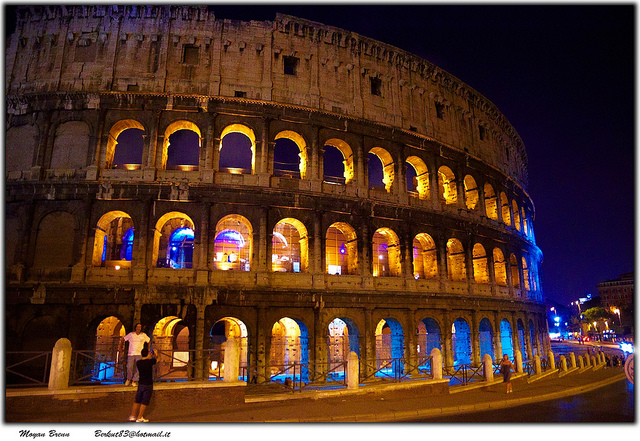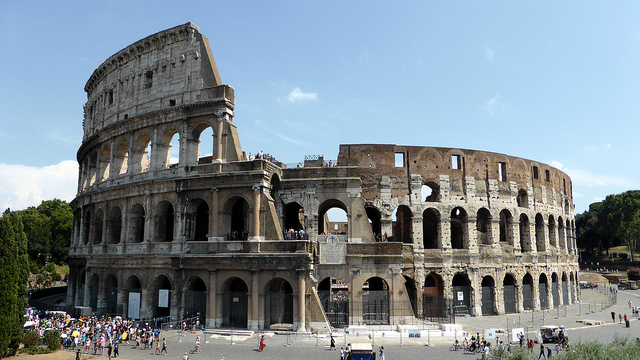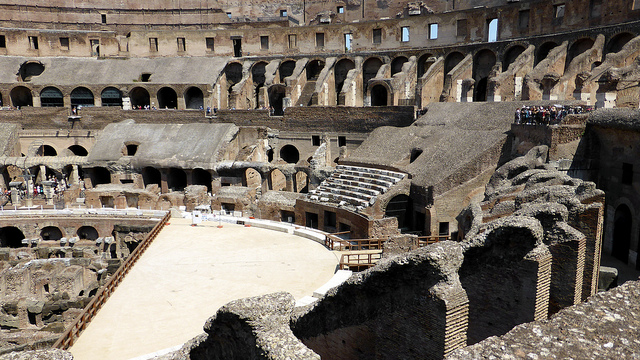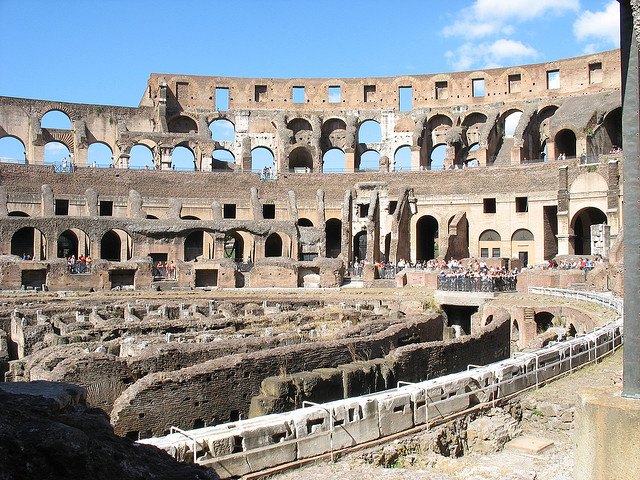Architecture Feature – Colosseum, Rome

Surely one of the most enigmatic monuments ever constructed on Planet Earth, The Colosseum is the finest example of the richness of Roman architecture. Though the structure stands in ruins today, it has definitely stood the test of time to be an iconic structure that architecture enthusiasts across the globe have bowed down to for centuries. In this post of our Architecture Feature series, we bring to you some important details about the Colosseum, which is nothing short of a true marvel:
 Photo Credit: Moyan Brenn/Flickr
Photo Credit: Moyan Brenn/Flickr
The most spectacular attraction in Italy, the Colosseum is located towards the eastern side of the Roman Forum in Rome. It is the largest amphitheatre in the world, which is said to have been capable of accommodating up to 80000 spectators at one time. Built during the reign of the Flavian Dynasty, it is also referred to as the Flavian Amphitheatre.
 Photo Credit: Sean MacEntee/Flickr
Photo Credit: Sean MacEntee/Flickr
The Colosseum dates back to 70 AD, and was at one point of time used for spectacles like gladiatorial games and venatio (animal hunting). Today, the Colosseum is regarded as a UNESCO World Heritage site, and is thronged by millions of tourists visiting Italy every year, who wish to get a first-hand glimpse of this magnificent amphitheatre.
 Photo Credit: Sean MacEntee/Flickr
Photo Credit: Sean MacEntee/Flickr
Constructed using huge blocks of travertine stones, the Colosseum is one of the few ancient Roman structures that were free standing. An estimated 100000 cubic metres of stone is believed to have been used in the construction of the walls of this architectural masterpiece. The interior of the Colosseum features a humongous arena bordered by multi-level open as well as sheltered viewing spaces on all sides. The seating, it is said, was divided on the basis of the social status of the people.
 Photo Credit: Rennett Stowe/Flickr
Photo Credit: Rennett Stowe/Flickr
There used to be 80 entrances/exits in the Colosseum, in order to allow easy entry and exit of huge crowds. However, only four of the entrances were used as primary entry/exit points. The total area of the structure was spread out over six acres of land, and unlike most other amphitheatres which were round in shape, the Colosseum was oval.
With its colossal arches, grand walkways and spectacular seating setup, the Colosseum makes for one of the most admirable monuments of all times. Even though time has significantly tainted the state of the Colosseum, it has been recognized as the most remarkable architectural masterpiece in Rome throughout the ancient, medieval and modern times.
To read about other great structures around the world, visit PropTiger.com